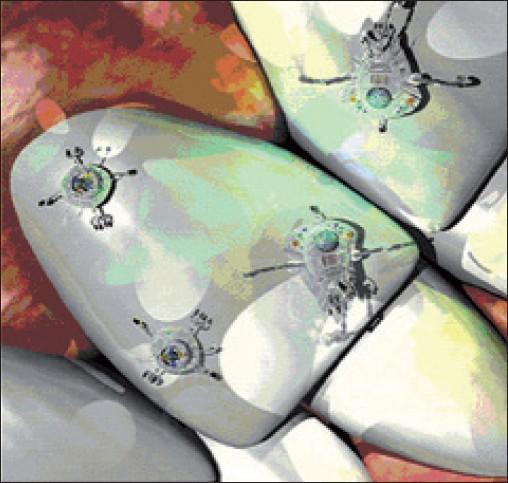There’s a foot treatment called a fish pedicure where tiny, toothless Garra rufa fish nibble away at a person’s feet to get rid of all the dead skin. Well, researchers from the University of Pennsylvania are working on a similar treatment for your teeth, except that instead of dead skin, it’s removing plaque. And instead of tiny fish, it uses a swarm of microrobots.
This might sound extremely exciting to some, and terrifying to others, but there is no denying that technological advancements have certainly made our lives easier, and more interesting. With such microrobots, it might be a quicker, and cleaner process when you head to the dentist for plague removal. Of course, the best scenario would be if you took good care of your teeth and head to this dentist in Greeneville to assist with your dental needs. Who knows, in the future, the entire dental industry might be run by robots; from getting your braces done to basic teeth cleaning services. But for now, we have the advent of nanobots that will certainly revolutionize the way dental care is carried out. Not to fret though, there will certainly be many precautions in place to ensure utmost safety for patients.
The main idea behind this microbots-based treatment is to use a small army of miniature robots to precisely and non-invasively get rid of plaque, the soft biofilm which builds up on your teeth and can cause tooth decay and gum disease if not properly removed. The movement of the robot cleaning crew is controlled using a magnetic field, meaning that steering could be carried out by a dentist.
“Biofilms are complex and mechanically stable scaffolds that can be resistant to antibacterial drugs,” Michel Koo, a professor in Penn Dental School at the University of Pennsylvania, told Digital Trends. “Current antimicrobial techniques are largely ineffective for two reasons. The first is that they do not address the protective mechanisms of biofilms associated with drug resistance. The second is the fact that biofilms can rapidly re-establish themselves on a surface if not eradicated and retake a hold, causing re-infection.”
The team’s robotic platform involves suspended iron-oxide nanoparticles, which generate bacteria-killing and matrix-degrading molecules on site. These break down biofilm protection and thus kill the bacteria more effectively. Once destroyed, the bacterial biomass debris is then plowed away by applying an external magnetic field to clean up the surface so that it can’t regrow. The result is what Koo calls a “kill-degrade-and-remove” approach.
“The robots can do all three at once very effectively, leaving no trace of biofilm whatsoever,” he continued. “Furthermore, these can be achieved in an automated fashion with no need for laborious manual biofilm scraping or manual application of chemicals to kill bacteria.”
The researchers have so far demonstrated proof-of-concept of feasibility and efficacy for the system. This included showcasing its practical applications by cleaning a real human tooth. “We are now optimizing our system for clinical applications, including prototyping devices that use these microrobots for biofilm removal in a variety of surfaces,” Koo said. “After showing efficacy in vivo and in clinical studies, our plan is to license this technology or perhaps spin-off a company.”






